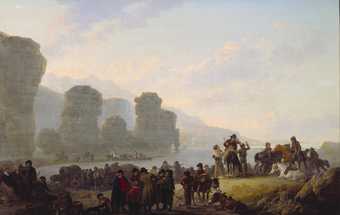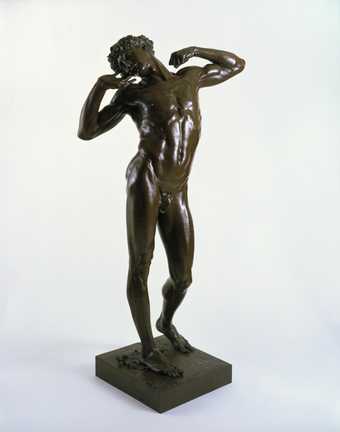
Julius Caesar Ibbetson
Smugglers on the Irish Coast (1808)
Tate
The exhibition of British Narrative Pictures covers a period approximately from the Regency to the beginning of the twentieth, including examples of the genre painting of the first half of the nineteenth century, of the Pre-Raphaelites, and of painters of domestic scenes of the 1880s and 1890s.
In making the selection, the term ‘narrative’ has been liberally interpreted. The interest of a number of the pictures, for example T. M. Rooke’s Ruth, and Strudwick’s Golden Thread, does indeed lie partly in the success with which pictorial narration has been achieved. It is, however, upon the interpretation of incident and of character (as given, for instance, in Mulready’s The Last In, or Houghton’s Ramsgate Sands), or even of mood (as in Conder’s Green Apple, or Napier Hemy’s Evening Grey) that the charm of the majority of the paintings depends.
Apart from its artistic interest, the exhibition provides a subsidiary historical interest as an illustration of the habits and aspirations of society during the period covered, particularly of the Victorian era, the character of which now strikes us as so remote. British narrative and genre painting in the nineteenth century has, at its best, as in the early work of the Pre-Raphaelites and their associates, a native intensity which entitles it to separate study in the history of English culture.
John Rothenstein

